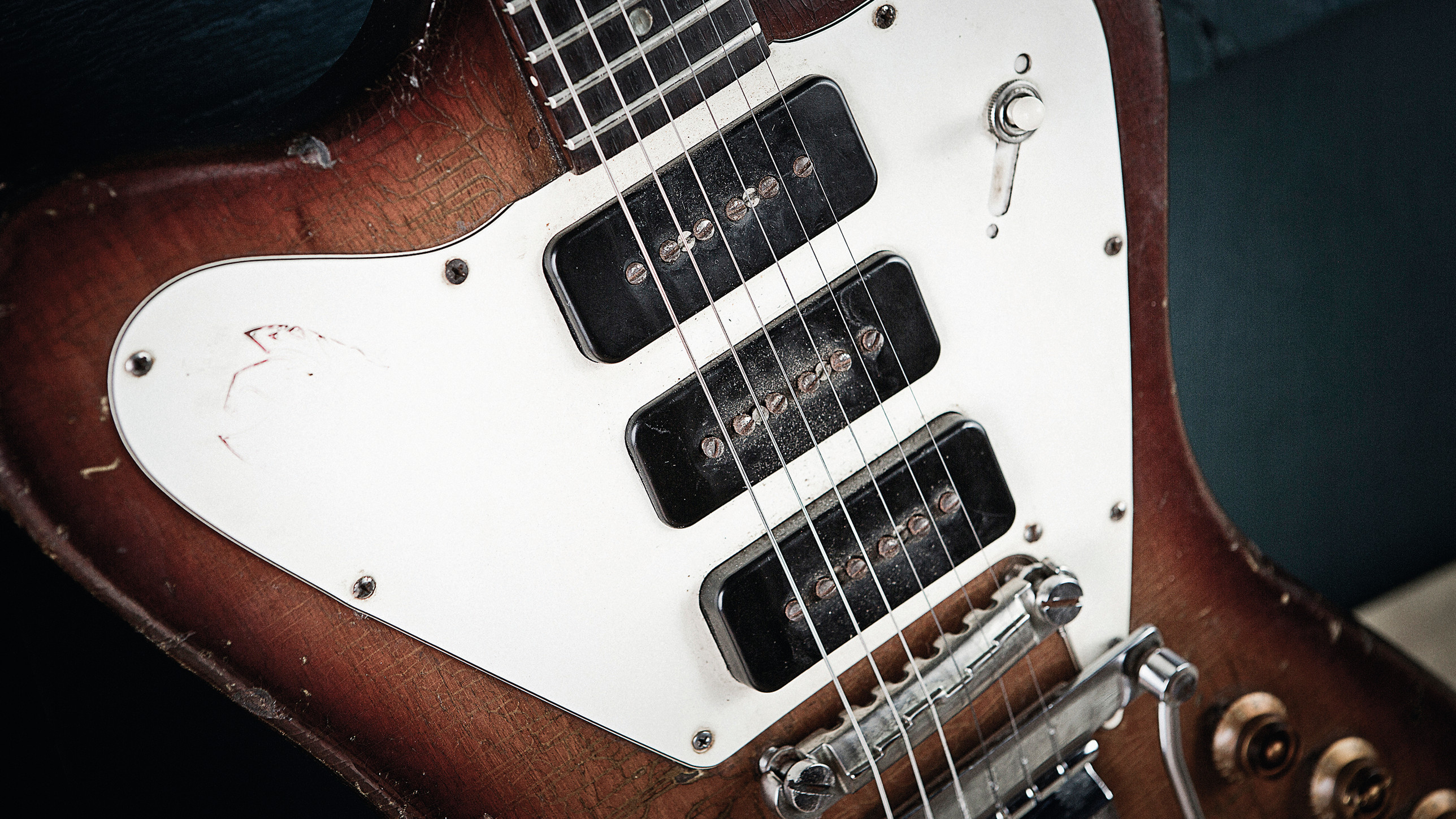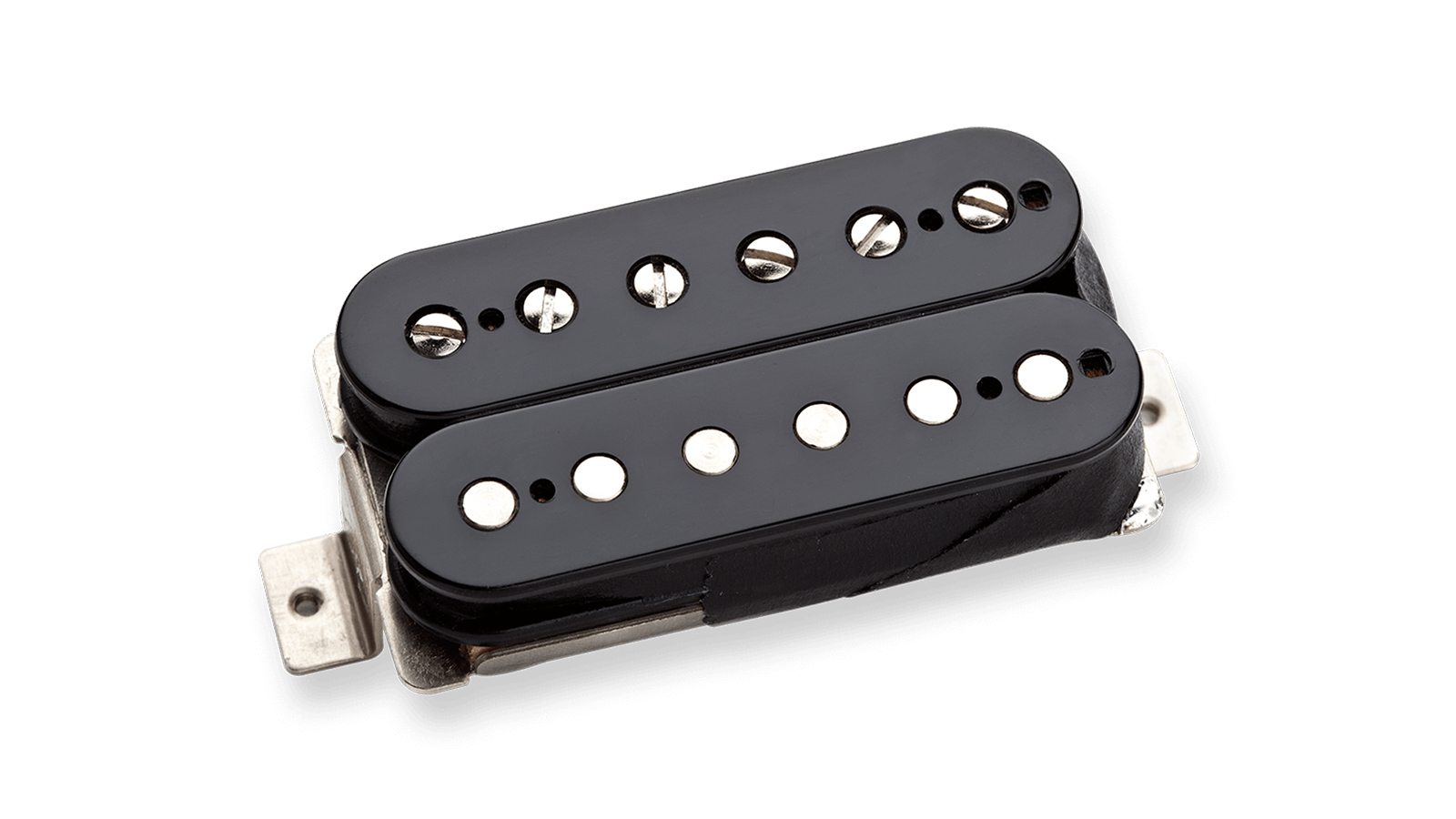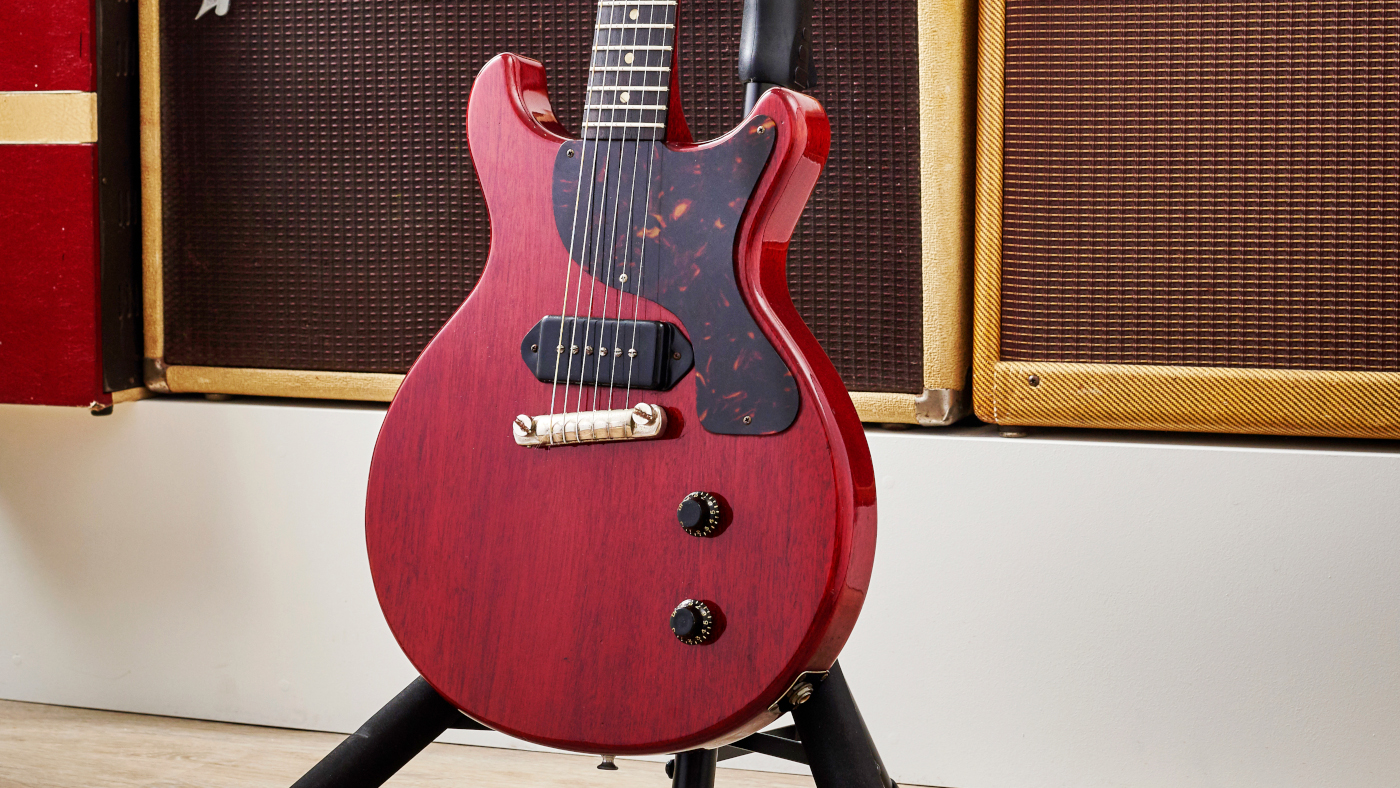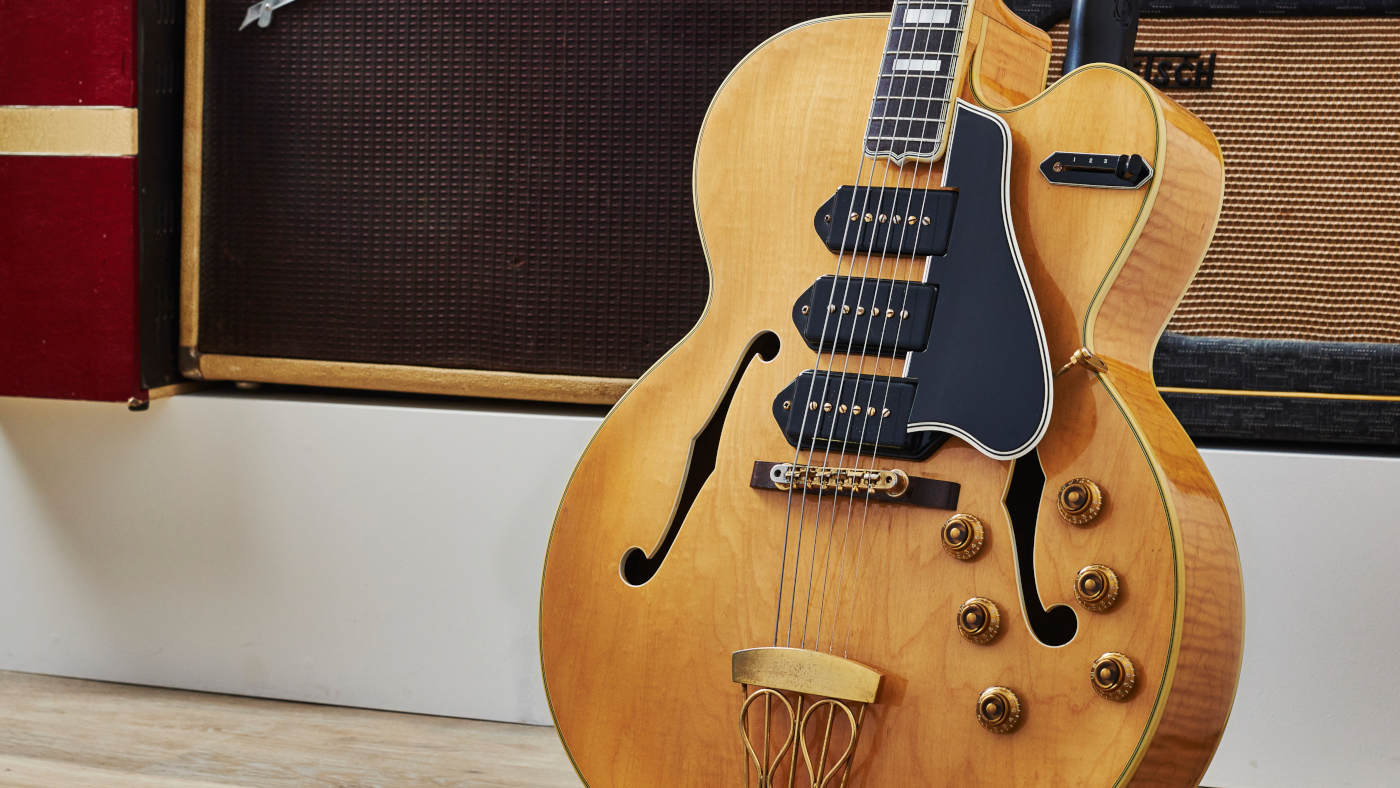
We meet with ThroBak’s repro supremo, Jon Gundry, to look at how Gibson’s preeminent single-coil pickup evolved.
The earliest P-90 pickups appeared just after the First World War in 1946, having evolved from the short-lived P-13 single-coil variants.

Using a plastic bobbin and two Alnico bar magnets, they were wound with 42-gauge plain enamel wire and can be found on a variety of post-war Gibson electric models including lap steels, archtops and solid-bodied guitars.
The ensuing success of the P-90 helped to bolster Gibson’s status as a market leader in the new era of electric guitars and it remained the company’s standard pickup until being eclipsed by the PAF humbucker in the late 50s.
Its basic construction remains the same, but the P-90 has seen many changes with respect to manufacturing techniques and materials
Nevertheless, testament to its winning design, the P-90 has remained in regular production to this day and is often cited as the pickup of choice for many a guitarist across a diverse range of styles including jazz, blues, rock and punk.
Although its basic construction remains the same, having been in production for well over seven decades, the P-90 has seen many changes with respect to manufacturing techniques and materials - changes that, to many people’s ears, significantly affect both the pickup’s sound and appearance. As such, over the years, guitarists have increasingly turned to period-correct repro P-90s and sought out original examples from the earlier periods of Gibson production for a piece of that elusive vintage magic.
Hoping to arm our readers with some down-to-earth knowledge by shedding some light on the evolution of the P-90 throughout Gibson’s golden era of the 50s and 60s, we spoke to Jon Gundry, founder of Michigan’s preeminent P-90/PAF repro specialists, ThroBak, located in Grand Rapids, some 50 miles north of Gibson’s old Kalamazoo site.
Get the MusicRadar Newsletter
Want all the hottest music and gear news, reviews, deals, features and more, direct to your inbox? Sign up here.
“The initial design appealed to people for good reason,” Jon tells us, “and that design evolved over time because of Gibson’s desire to improve efficiency and I think that’s what drove the evolution of [P-90s]. Those changes inevitably affected the sound, so what I try to do is recreate those variations and elements of the 50s and 60s from ’52 onward. We make every single part of the pickup assembly here in the USA, and for some of our P-90s, we use one of the original machines with the original fixtures that Gibson used. It’s a Geo Stevens machine made in 1950, so that’s probably a reliable timeline as to when the P-90’s design was finalised.

Magnetic personality
“As far as the magnets go, P-90s generally have the same 1/8-inch thick magnets that you see in PAFs, but there was a very small window where they used a thicker [3/16- inch] Alnico III magnet. Those sound quite good. They appear randomly during ’52, and you can also find some from ’53.
The general consensus is 10,000 turns, but that varies depending on the era and it’s not unusual to find P-90s well under 10,000 turns
“After that, they mainly used Alnico IV, V and II. I’ve seen a pattern of Alnico IV being used for bridge pickups and Alnico II being used for neck pickups, but like many things with vintage guitars, they weren’t consistent about it. By 1960, you often see them with shorter magnets [50s magnets typically measure 21⁄2-inches in length], and by ’61, they became standard. The shorter magnets generally sound a little more aggressive than the longer equivalent Alnico magnets.
“In the 50s, Gibson used the same 42-gauge plain enamel wire you find in PAFs. The general consensus is 10,000 turns, but that varies depending on the era and it’s not unusual to find P-90s well under 10,000 turns. P-90s most often vary between 7.2k and 8.1k[ohms DCR]. You can find outliers above and below, but throughout the 50s they’re generally not as hot as later ones. You see random differences in the ohms [resistance] per foot of the wire and the 42-gauge diameter tolerance. It becomes much more consistent when they go [from plain enamel] to poly-coated wire around ’65 to ’66, but the poly wire really changes the character of the sound.
“The P-90’s character also changes depending on which winding machine was used because of the differences in coil tightness. That really affects the tone. I equate a more compact coil with a crisper treble response in the low-end, which gives a slightly harder tone.”
Not all P-90s were created equal. Since the unit’s introduction in 1946, the ongoing changes to Gibson’s manufacturing methods and supplies - coupled with the quirks and foibles of man, machine and materials - have bolstered the P-90’s enigmatic charm by rendering it with a multitude of tonal variances.
Although we can easily hear the bigger picture, the partially random nature and complex interaction of wire tolerances, number of winds, coil tightness, Alnico magnet type, magnetic charge, carbon steel composition, baseplate materials and plastics have long shrouded the P-90 in vintage mystique/confusion. And so, hoping to impart a touch of P-90 wisdom to you by shedding light on how some of the nuances of its inner workings translate into sound, we caught up with Jon Gundry of P-90/PAF repro specialists ThroBak in Michigan.

Picking a P-90
“When people are trying to choose a P-90,” begins Jon, “I tell them to think of the lower-resistance pickups as having a crisper pick attack. They’re more articulate and dynamic and will clean up more readily. With a lower-resistance P-90, your amp is going to see more headroom and, therefore, is less apt to be driven into distortion with pick attack.
“The higher-resistance P-90s sound fatter and more aggressive. Although they have comparatively less headroom with the amp and are naturally more prone to distort, the upside is you have more usable room when rolling back the guitar volume. As the resistance goes up, you get a thicker tone with more midrange and the amp gets driven harder. But, at some point, you might sacrifice a bit of low-end clarity.
A P-90 tends to have a little less dynamic range and is more apt to compress with pick attack than a PAF
“Along with our DE MXV reproduction dog-ear P-90 bridge pickups [available with long Alnico IV magnets in a choice of 7.8k, 8.4k, 9.0kohms or custom-spec DCR] we have three basic models of the soap bar P-90 in our SB MXV range based on the variations I’ve seen during repairs and in original guitars. We have a ’52/’54 set, a ’55/’56 set and a set called the Special. The differences between those mainly relate to resistance and Alnico magnet choice [including long Alnico II and IV types].
“Since there are two Alnico magnets in a P-90, and because of the way they are positioned, there is a more pronounced effect on the inductance of the pickup than in a [single-magnet] PAF. In other words, you get a different EQ profile with the same Alnico type in a PAF. A P-90 tends to have a little less dynamic range and is more apt to compress with pick attack than a PAF, but that’s part of their character. When it’s distorted, it sounds a little squishier than a PAF - particularly with hotter, higher resistance P-90s - and, as far as low-end articulation goes, you seem to hit the end of the range far more quickly.
“Generally, the best approach for getting the optimum tone out of a P-90 is to get the entire pickup as close as you can to the strings and then fine-tune it with the pole screws. The treble response is more pleasing with vintage era, or vintage reproduction P-90s like ours, because the carbon content in the steel pole screws is lower. Part of the reason you can get a P-90 so close to the strings is because it doesn’t have as much magnetic pull as a Fender- style pickup, so you’re not going to get those weird oscillations [aka ‘Strat-itis’].
“If you want a more acoustic quality out of the guitar, there’s an advantage with a 50s- or 60s-style P-90 because you have the added benefit of good microphonics from it not being wax potted - they just have the same flat black paper tape as a PAF. Direct contact with the guitar body is also an advantage; the better the contact is with the body, the better the acoustic microphonics transmitting through the pickups will be. In that sense, there’s something to be said for a dog-ear P-90, although if you have a Les Paul Special or Les Paul Model, those [soap bar P-90] pickups do sit on the bottom of the cavity, so you’re still getting some of that.”
We would like to thank Jon Gundry of ThroBak Electronics
Guitarist is the longest established UK guitar magazine, offering gear reviews, artist interviews, techniques lessons and loads more, in print, on tablet and on smartphones Digital: http://bit.ly/GuitaristiOS If you love guitars, you'll love Guitarist. Find us in print, on Newsstand for iPad, iPhone and other digital readers












